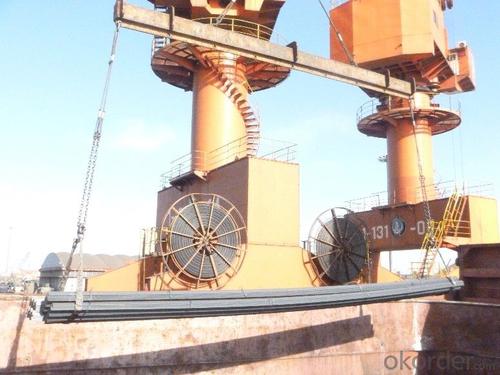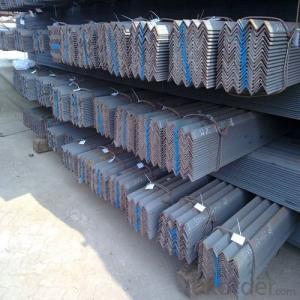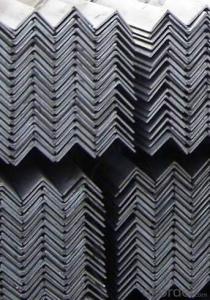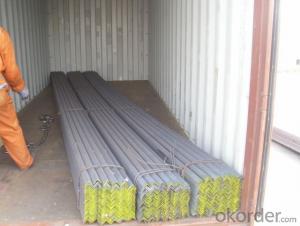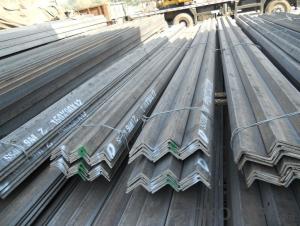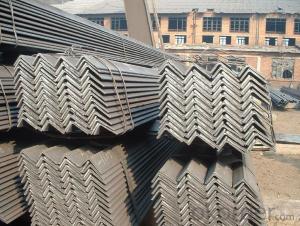High Quality Hot Rolled Steel Unequal Angle Equal Angle for Construction
- Loading Port:
- Tianjin
- Payment Terms:
- TT OR LC
- Min Order Qty:
- 25000 m.t.
- Supply Capability:
- 2000000 m.t./month
OKorder Service Pledge
OKorder Financial Service
You Might Also Like
Specification
Product Description:
OKorder is offering High Quality Hot Rolled Steel Unequal Angle Equal Angle for Construction at great prices with worldwide shipping. Our supplier is a world-class manufacturer of steel, with our products utilized the world over. OKorder annually supplies products to European, North American and Asian markets. We provide quotations within 24 hours of receiving an inquiry and guarantee competitive prices.
Product Applications:
High Quality Hot Rolled Steel Equal Angle Equal Angle for Construction are ideal for structural applications and are widely used in the construction of buildings and bridges, and the manufacturing, petrochemical, and transportation industries.
Product Advantages:
OKorder'sHigh Quality Hot Rolled Steel Unequal Angle Equal Angle for Construction are durable, strong, and resist corrosion. They are newly produeced by good materiales.
Main Product Features:
· Premium quality
· Prompt delivery & seaworthy packing (30 days after receiving deposit)
· Corrosion resistance
· Can be recycled and reused
· Mill test certification
· Professional Service
· Competitive pricing
Product Specifications:
Specifications ofHigh Quality Hot Rolled Steel Unequal Angle Equal Angle for Construction
1. Invoicing on theoretical weight or actual weight as customer request
2. Length: 6m, 9m, 12m as following table
3. Sizes

Sizes: 25mm-250mm | ||
a*t | ||
25*2.5-4.0 | 70*6.0-9.0 | 130*9.0-15 |
30*2.5-6.6 | 75*6.0-9.0 | 140*10-14 |
36*3.0-5.0 | 80*5.0-10 | 150*10-20 |
38*2.3-6.0 | 90*7.0-10 | 160*10-16 |
40*3.0-5.0 | 100*6.0-12 | 175*12-15 |
45*4.0-6.0 | 110*8.0-10 | 180*12-18 |
50*4.0-6.0 | 120*6.0-15 | 200*14-25 |
60*4.0-8.0 | 125*8.0-14 | 250*25 |
5. Payment terms:
1).100% irrevocable L/C at sight.
2).30% T/T prepaid and the balance against the copy of B/L.
3).30% T/T prepaid and the balance against L/C
6.Material details:
Alloy No | Grade | Element (%) | |||||
C | Mn | S | P | Si | |||
Q235 | B | 0.12—0.20 | 0.3—0.7 | ≤0.045 | ≤0.045 | ≤0.3 | |
Alloy No | Grade | Yielding strength point( Mpa) | |||||
Thickness (mm) | |||||||
≤16 | >16--40 | >40--60 | >60--100 | ||||
≥ | |||||||
Q235 | B | 235 | 225 | 215 | 205 | ||
Alloy No | Grade | Tensile strength (Mpa) | Elongation after fracture (%) | ||||
Thickness (mm) | |||||||
≤16 | >16--40 | >40--60 | >60--100 | ||||
≥ | |||||||
Q235 | B | 375--500 | 26 | 25 | 24 | 23 | |
Usage & Applications of High Quality Hot Rolled Steel Unequal Angle Equal Angle for Construction
According to the needs of different structures, Angle can compose to different force support component, and also can be the connections between components. It is widely used in various building structures and engineering structures such as roof beams, bridges, transmission towers, hoisting machinery and transport machinery, ships, industrial furnaces, reaction tower, container frame and warehouse etc.
Packaging & Delivery ofHigh Quality Hot Rolled Steel Unequal Angle Equal Angle for Construction
1. Packing: it is nude packed in bundles by steel wire rod
2. Bundle weight: not more than 3.5MT for bulk vessel; less than 3 MT for container load
3. Marks:
Color marking: There will be color marking on both end of the bundle for the cargo delivered by bulk vessel. That makes it easily to distinguish at the destination port.
Tag mark: there will be tag mark tied up on the bundles. The information usually including supplier logo and name, product name, made in China, shipping marks and other information request by the customer.
If loading by container the marking is not needed, but we will prepare it as customer request.
Production flow of High Quality Hot Rolled Steel Equal Angle Equal Angle for Construction
Material prepare (billet) —heat up—rough rolling—precision rolling—cooling—packing—storage and transportation
FAQ:
Q1: Why buy Materials & Equipment from OKorder.com?
A1: All products offered byOKorder.com are carefully selected from China's most reliable manufacturing enterprises. Through its ISO certifications, OKorder.com adheres to the highest standards and a commitment to supply chain safety and customer satisfaction.
Q2: How do we guarantee the quality of our products?
A2: We have established an advanced quality management system which conducts strict quality tests at every step, from raw materials to the final product. At the same time, we provide extensive follow-up service assurances as required.
Q3: How soon can we receive the product after purchase?
A3: Within three days of placing an order, we will begin production. The specific shipping date is dependent upon international and government factors, but is typically 7 to 10 workdays.
Images:
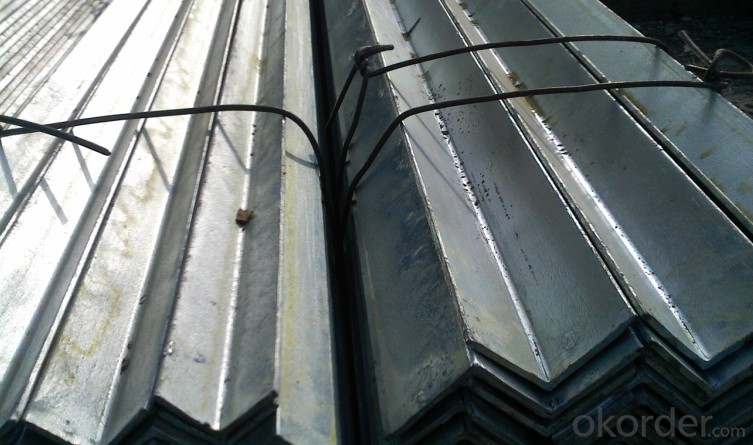
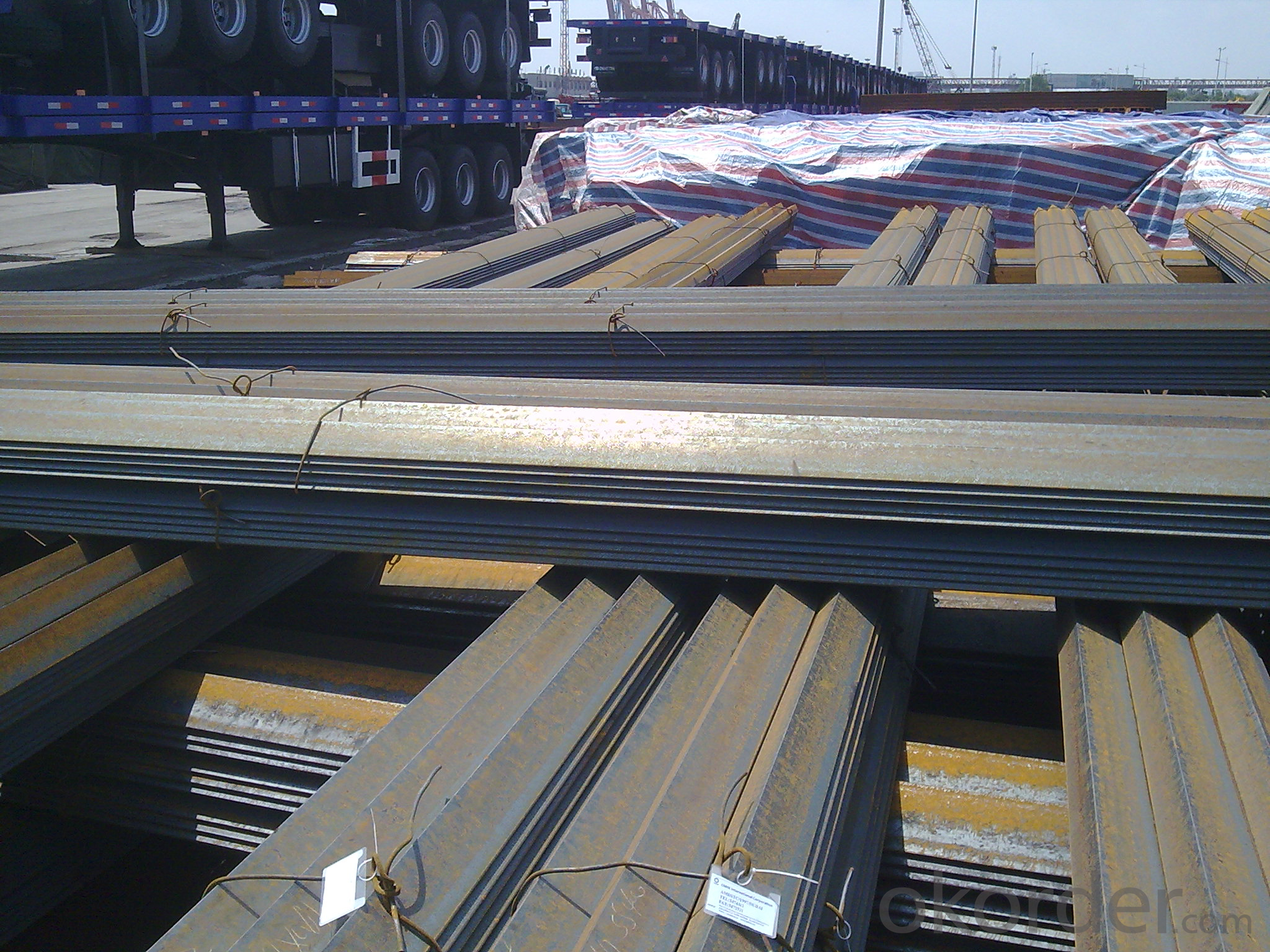
- Q: How do steel angles perform in corrosive environments?
- Steel angles exhibit good performance in corrosive environments, but their resistance to corrosion is contingent upon the type and grade of steel employed. Generally speaking, stainless steel angles and galvanized steel angles outperform carbon steel angles in terms of corrosion resistance. Stainless steel angles incorporate chromium, which generates a passive layer on the surface, thereby safeguarding against corrosion. Consequently, they possess heightened resistance to rust and other forms of corrosion, even in highly corrosive settings like saltwater or chemical plants. Galvanized steel angles, on the other hand, are steel angles that have been endowed with a zinc coating. This zinc coating functions as a sacrificial barricade, shielding the underlying steel from corrosion. In humid environments or ones exposed to moisture, galvanized steel angles excel due to their exceptional corrosion resistance facilitated by the zinc coating. Conversely, carbon steel angles are more susceptible to corrosion. In the absence of any protective coating, exposure to moisture or corrosive substances can lead to rust and corrosion in carbon steel angles. Nevertheless, there exist several methods to augment the corrosion resistance of carbon steel angles, such as the implementation of protective coatings or the utilization of corrosion inhibitors. In summary, steel angles can perform commendably in corrosive environments; however, the selection of steel grade and implementation of protective measures are pivotal for ensuring their long-term corrosion resistance. Stainless steel angles and galvanized steel angles are typically favored due to their superior corrosion resistance, while carbon steel angles necessitate supplementary safeguarding to ensure their durability in corrosive environments.
- Q: Can steel angles be used for stairs or handrails?
- Yes, steel angles can be used for stairs or handrails. Steel angles provide structural support, durability, and versatility, making them suitable for constructing stairs and handrails in various applications. They can be easily fabricated, welded, and installed, ensuring a safe and reliable solution for staircase and handrail construction.
- Q: What is the fire resistance rating of steel angles?
- The fire resistance rating of steel angles varies depending on the specific dimensions and configuration of the angle, as well as the fire protection measures implemented. In general, steel has good fire resistance properties due to its high melting point, but additional fireproofing measures such as fire-resistant coatings or insulation may be necessary to enhance its fire resistance rating. It is important to consult relevant building codes, fire protection standards, and engineering specifications to determine the specific fire resistance rating of steel angles in a given application.
- Q: What are the tolerance specifications for steel angles?
- The tolerance specifications for steel angles can differ based on various organizations and industries' specific standards and requirements. However, in general, the tolerance specifications for steel angles typically encompass measurements for dimensions like leg length, thickness, and straightness. Leg length tolerance ensures that the angle's legs are within an acceptable range of the desired measurement by allowing a certain deviation from the specified leg length. For instance, a tolerance specification of ±1/8 inch permits the leg length to deviate by up to 1/8 inch in either direction from the specified dimension. Thickness tolerance denotes the allowable deviation in the thickness of the steel angle. This specification guarantees consistency and adherence to an acceptable range of thickness. It is usually expressed as a percentage or an absolute value. For example, a tolerance specification of ±10% permits the thickness to deviate by up to 10% above or below the specified dimension. Straightness tolerance ensures that the steel angle is not bent or twisted and meets the required straightness criteria. It is commonly measured by the maximum allowable deviation from a straight line. This tolerance specification guarantees ease of fitting and alignment during construction or manufacturing processes. It is important to note that the specific tolerance specifications for steel angles may vary depending on the intended application, industry standards, and regulatory requirements. Therefore, it is recommended to consult the manufacturer, industry associations, or governing bodies for accurate and up-to-date information on the tolerance specifications for steel angles by referring to the relevant standards, codes, or specifications.
- Q: Are steel angles suitable for balcony construction?
- Indeed, balcony construction can make use of steel angles as they possess the necessary qualities of strength and durability. In construction, steel angles find frequent application due to their exceptional support and stability, rendering them an ideal choice for balcony construction. The capacity of steel angles to withstand heavy loads and resist weathering and corrosion further solidifies their reliability for outdoor structures like balconies. Moreover, the customizable and fabricable nature of steel angles enables them to be tailored to specific design requirements, offering flexibility in balcony construction. Ultimately, the strength, durability, and versatility of steel angles contribute to their popularity and suitability for balcony construction.
- Q: Can steel angles be used for pipe support systems?
- Indeed, pipe support systems can indeed utilize steel angles. In construction and engineering ventures, steel angles are frequently employed due to their exceptional durability, stability, and adaptability. When employed as pipe supports, steel angles furnish a robust and dependable framework for securely holding pipes in position. They can effortlessly be joined through welding or bolting to other structural elements, rendering them suitable for a variety of pipe support applications. Furthermore, steel angles can be fabricated and tailored to satisfy specific requirements, encompassing diverse pipe sizes and load-bearing capacities. In summary, owing to their resilience and capacity to withstand substantial loads, steel angles remain a favored option for pipe support systems.
- Q: What are the common connection methods for steel angles?
- There are several common connection methods for steel angles, depending on the specific application and structural requirements. One of the most commonly used connection methods is welding. Steel angles can be welded together using various welding techniques such as arc welding or MIG welding. Welding provides a strong and durable connection, ensuring the angles remain securely joined. Another common method is bolting. Steel angles can be connected using bolts, nuts, and washers. This method allows for easy disassembly and reassembly if needed. Bolting is often preferred in situations where the angles may need to be adjusted or replaced in the future. Riveting is another connection method used for steel angles. This involves using rivets to connect the angles together. Riveting provides a strong and reliable connection, especially in applications where the angles are subjected to shear or tension forces. In some cases, steel angles can also be connected using adhesive bonding. This method involves using specialized adhesives to create a strong bond between the angles. Adhesive bonding is useful when welding or bolting is not feasible or desired. It is important to consider factors such as load capacity, structural integrity, and the specific requirements of the project when selecting the appropriate connection method for steel angles. Consulting with a structural engineer or professional in the field is recommended to ensure the best connection method is chosen for a particular application.
- Q: Can steel angles be used for HVAC systems?
- Steel angles have the capability to be utilized in HVAC systems. Due to their strength and versatility, steel angles are frequently employed in construction and engineering applications. In the realm of HVAC systems, steel angles have numerous applications including providing support for ductwork, securing equipment, and establishing ventilation system frameworks. Steel angles possess durability, corrosion resistance, and the ability to withstand the weight and pressure of HVAC components. Moreover, they can be effortlessly welded or bolted together to form personalized structures and configurations. In conclusion, steel angles are an appropriate selection for HVAC systems due to their strength, durability, and design flexibility.
- Q: How do you prevent steel angles from rusting in high humidity environments?
- To prevent steel angles from rusting in high humidity environments, a common approach is to apply a protective coating like paint or epoxy. This creates a barrier between the steel and moisture, preventing direct contact and inhibiting rust formation. Additionally, regular inspections and maintenance, such as cleaning and reapplying the protective coating when necessary, can help ensure the longevity of the steel angles in such conditions.
- Q: Are steel angles suitable for mezzanine floors?
- Indeed, steel angles prove to be a fitting choice for constructing mezzanine floors. Their robustness, longevity, and affordability render them a prevalent choice in mezzanine floor construction. By delivering structural reinforcement and steadiness, steel angles facilitate the expansion of floor area. Their fabrication and installation are straightforward, thus contributing to their widespread adoption in the creation of mezzanine floors. Not only can they endure substantial loads, but they also provide a solid foundation for diverse applications, such as storage, offices, or supplementary workspaces. Furthermore, steel angles can be tailored to meet specific design prerequisites, showcasing their versatility as a prime option for mezzanine floor construction.
Send your message to us
High Quality Hot Rolled Steel Unequal Angle Equal Angle for Construction
- Loading Port:
- Tianjin
- Payment Terms:
- TT OR LC
- Min Order Qty:
- 25000 m.t.
- Supply Capability:
- 2000000 m.t./month
OKorder Service Pledge
OKorder Financial Service
Similar products
Hot products
Hot Searches
Related keywords



